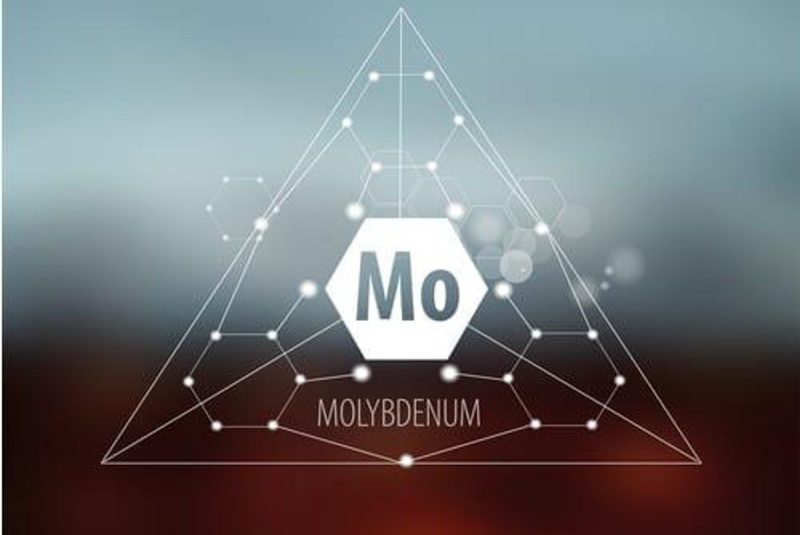Molybdenum is one of the refractory metals, meaning it is incredibly resistant to heat and wear. These properties have made the molybdenum industry an important segment of the global economy.
First discovered in 1778, this silver-gray industrial metal doesn’t occur on its own in nature; it is usually extracted as a by-product of copper and tungsten, which can create supply challenges. Molybdenum can be found in the minerals wulfenite, powellite and molybdenite, though molybdenite is the main mineral used to produce the commodity.
According to the International Molybdenum Association (IMOA), 80 percent of the molybdenum that is mined each year is used to make stainless steel, cast iron and superalloys. Molybdenum has a high melting point of 4,730 degrees Fahrenheit, and with the addition of just a small amount of the metal, steel becomes much harder with has a high resistance to corrosion, heat and rust.
The remaining balance of molybdenum supply is used as a chemical, particularly in lubricants and paints. The metal is also finding more use in the oil and gas sector, where refineries use it in catalysts to reduce the amount of sulfur in gasoline and diesel fuels.
Where is molybdenum mined and how is it used?
According to the IMOA, in 2022, molybdenum production fell by a mere 1 percent compared to 2021, while global consumption rose by 3 percent to hit 635.1 million pounds, or just over 288,000 metric tons.
The US Geological Survey states that world mining output of molybdenum was down in 2022 at 250,000 metric tons (MT) compared to 255,000 MT in 2021. China remains the world’s leading producer of molybdenum, putting out 100,000 MT in 2022, and Chile was the second top mining jurisdiction for the versatile metal, with output of 44,000 MT.
The US is another top-tier producer, mining 42,000 MT of molybdenum in 2022 to come in third overall. The country is also a large consumer of the metal — the 12 month period brought an 8 percent increase in the country’s rate of import for consumption.
Chile isn’t the only Latin American country that was a top molybdenum producer. Peru ranks fourth, with its mining industry producing 32,000 MT in 2022, while Mexico had the fifth highest output at 16,000 MT.
Applications for molybdenum are rising, as are products in the pipeline that utilize the affordable material.
Due to its resistance to corrosion and ability to withstand high temperatures, molybdenum offers excellent thermal conductivity and low thermal expansion, making it ideal for a number of technological applications. In addition, the metal is in a strong position to gain as the energy sector expands.
How to invest in molybdenum stocks?
As mentioned, molybdenum is often mined as a by-product of copper and other metals. However, there are also mines in the molybdenum industry that focus specifically on the metal.
For example, Freeport-McMoRan (NYSE:FCX) subsidiary Climax Molybdenum has two molybdenum-only mining operations in Colorado. They have the capacity to produce roughly 30 million pounds of molybdenum each year.
Centerra Gold (TSX:CG,NYSE:CGAU) has two molybdenum mines that are on care and maintenance, which it acquired via its 2016 purchase of Thompson Creek Metals Company. In February, Centerra stated that it is considering bringing the Thompson Creek mine back into production as global molybdenum prices have shown signs of improving. The company released a pre-feasibility study in late September with a mine plan that includes total production of 134 million pounds over an 11 year life of mine. Centerra plans to complete a feasibility study for a restart by mid-2024, and anticipates first production in H2 2027.
For its part, Taseko Mines (TSX:TKO,NYSEAMERICAN:TGB,LSE:TKO) produces molybdenum as a by-product from its 87.5 percent owned Gibraltar copper-molybdenum mine in Central BC. Other major firms that mine molybdenum as a by-product include Southern Copper (NYSE:SCCO) and Rio Tinto (NYSE:RIO,LSE:RIO,ASX:RIO).
It is also possible to invest in companies that are exploring or developing molybdenum projects. Some companies with molybdenum exploration projects are Stuhini Exploration (TSXV:STU), Erdene Resources (TSX:ERD), Starcore International Mines (TSX:SAM,OTCQB:SHVLF), Libero Copper (TSXV:LBC,OTCQB:LBCMF), Los Andes Copper (TSXV:LA,OTCQX:LSANF) and Latin Metals (TSXV:LMS,OTCQB:LMSQF).
Securities Disclosure: I, Melissa Pistilli, hold no direct investment interest in any company mentioned in this article.

